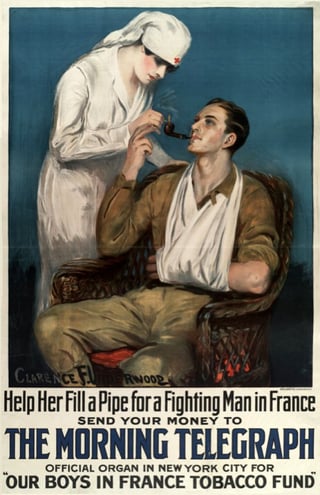11 Well-Made Print Advertisements From the Last Century (And How They Hold up Now)

In the history of American advertising, print has played a vital and interesting role.
Print advertising has been around as long as any medium, surviving the advent of radio, television, and internet, maintaining its steady influence all the while. There’s something truly iconic about a well-crafted print ad, and the agencies and brands that have done it well over the years have seen immense benefits as a result.
Here’s a look at some well-designed print ads from the last 115 years (one from each decade) and an attempt to understand what we can learn from the progression. Changes in taste, disruptive new technologies, and the natural evolution of our cultural propriety have completely transformed the way brands use print mediums to advertise – but certain patterns and threads hold true.
Using a modern interpretive lens to reexamine those strategic patterns (and the ads that made use of them) makes for an interesting case study of where we’ve been and where we’re headed - as advertisers and consumers.
1) 1906 - Kodak Story

Using content marketing to ‘tell the story’ of a brand is nothing new. While the platforms we use to display our content marketing change drastically, the same underlying concepts have been exploited by businesses as far back as the turn of the 20th century.
In this ad from 1906, camera-maker Kodak (whose continued success, over a century later, serves as evidence that they were and continue to be ahead of the curve marketing-wise) created a series of print advertisements that targeted parents buying gifts for their adolescent children. The ads promised a technologically advanced way for young people to capture the essence of their experiences with Kodak cameras, requiring little-to-no expertise but delivering reliably breathtaking results.
While the model’s hair and fashion choices betray the ad’s century-old status, the concept could apply to a magazine ad today. She is contentedly going over the stunningly mounted prints that she took with her Kodak. The background is accented by a beautifully somber twilight scene, which gives the viewer an idea of what her photographic subjects might have been. Another connection to today’s modern marketing is the call-to-action at the end of the ad: “The Kodak catalogue tells the details. Free at the dealers or by mail.”
Free ebook download, anyone?
2) 1917 - Our Boys in France Tobacco Fund

Throughout World War I, American advertisers used the contextual backdrop of the war to promote their products. This glorified propaganda was used by companies in many industries to put their brand in the good graces of the American people. If the buying public believed a company was in some way supporting the war effort in a meaningful way, they’d be much more inclined to spend their hard-earned dollars on it. This was based in factual reality for many industries: gramophones, for example, vital to Allied soldiers’ communication while in the trenches, sold extremely well during the war years.
Other, less impactful industries took part in in the strategy as well. This ad in (and for) The Morning Telegraph, a daily newspaper that was devoted primarily to horse racing results and theatre news, shows how widespread the practice had become by 1917. Since the paper itself couldn’t rightly be positioned as benefitting American soldiers in any direct way, they positioned themselves as the “Official Organ in New York City for the ‘Our Boys in France Tobacco Fund.’”
Today, this would likely be seen as exploitative (or at least lacking in subtlety). Brands like McDonald’s, for example, have been rightfully reprimanded by the public for being a bit too heavy-handed while linking their brand to American crises and national spirit. Patriotism still sells – it just requires a bit more subtlety from the brands using it, lest the buying public react negatively.
Comments
Post a Comment